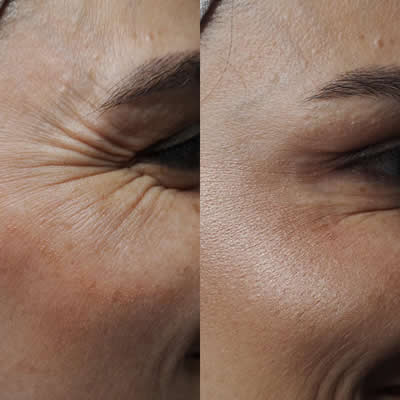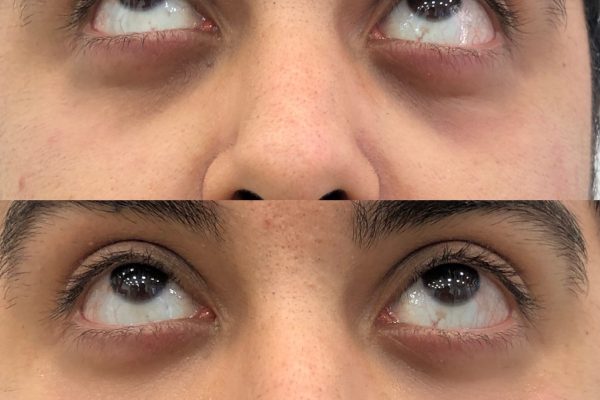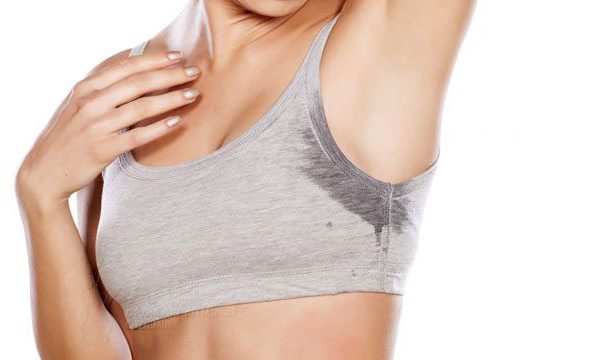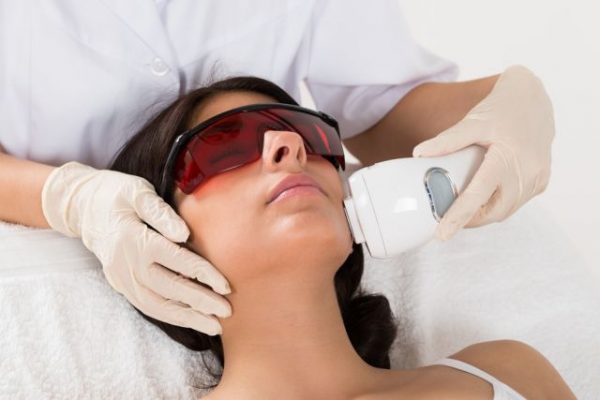The 2 most preferred applications of medical aesthetic procedures; botox and filler.
Botox and filler applications, which are completely different in terms of content and effect, although they are very similar in terms of the way they are applied, are not alternatives to each other due to their differences, contrary to general belief. Filling and botox procedures, both of which are used in different areas for different complaints, are procedures that can be applied in combination on the same day as a combination for the needs.
What is Botox?
Botox is the short name for botulinum toxin, a group of molecules produced by the bacteria clostridium botulinum. It is called a “toxin” because in very high amounts it can function as a “neurotoxin” in the body by blocking the movement of certain types of nerves.
Botox works by blocking nerve signals in the muscles where it is injected. When these nerve signals are interrupted, the affected muscle is temporarily paralysed or frozen. Because of these selected muscles, some wrinkles can be smoothed, reduced or even eliminated.
To relax muscle tension in the skin, age-related lines can be injected directly into the small muscles of facial expression, thus relaxing lines and wrinkles. It can also be used to relax the muscles that pull the face down, for example in the neck muscles, to give a lifting effect. It can also be used to block the sweat glands, so it can be used to treat excessive sweating (hyperhidrosis). Migraine can also be effectively treated with Botox injected into several points on the scalp. ‘
The effect can last between 3-6 months, depending on the individual.
Are there side effects of Botox?
Side effects of Botox are rare, but as with any injection in the skin, there is a risk of bruising and tenderness at the injection site. Headache can sometimes also be experienced by people on the first day of treatment. Most of the rare side effects include flu-like symptoms and difficulty swallowing.
Who cannot have Botox?
Botox is generally considered an extremely safe treatment and there are very few exceptions. Pregnancy is a contraindication, as is myasthenia gravis and some other rare neurological conditions.
Botox applied areas
It is applied to eliminate wrinkles in the forehead area, lines between the eyebrows, lines on the side walls of the nose, crow’s feet around the eyes, lines around the mouth and neck lines. Botox is a medical treatment method that gives successful results. Botox is among the most preferred methods in eyebrow lifting, removal of anger expression on the face and hyperhidrosis treatments.
What should you ask your counsellor before considering a treatment?
When undergoing any treatment, it is extremely important that you feel safe in the hands of your practitioner. Never be afraid to ask lots of questions to make sure the job is done correctly and safely.
How much does Botox cost?
The average cost of botox for 2024 is $100. Of course, this price varies according to the clinic and doctor.
What is a filling?
Dermal Fillers are a group of injectable medical products designed to add volume to tissues. There are different types of fillers such as hyaluronic acid fillers (the most common type), collagen stimulating fillers (sculptra). Fat transfer can also be considered a ‘filler’.
Factors such as advancing age, mimics, sun rays cause the amount of collagen, elastin and hyaluronic acid in our skin to decrease. The decrease in these substances, which give our skin a young and healthy appearance, causes collapses, lines and wrinkles on the skin. Hyaluronic acid-containing fillers eliminate such complaints and add volume to the skin. The effect usually lasts 18 months.
Are there any side effects of fillers?
Side effects with dermal fillers are usually rare, but include bruising, swelling, swelling and rarely vascular occlusion (where the injected filler is accidentally injected into a blood vessel, causing blockage and damage to the tissue that the vessel supplies with blood).
What to Ask Your Doctor Before Filling?
The main issue to ask is the extent of their qualifications and experience. It is important to confirm that your practitioner is medically qualified and able to inject hyaluronidase to dissolve any fillers in case of a vascular blockage.
Who Can Have Filling?
Contraindications for fillers include local infection of the skin, previous reaction to the filler, allergy to any substance in the filler and pregnancy. Since fillers are generally considered “inert medical devices”, they do not necessarily need to be prescribed by a doctor and do not have to be purchased without a prescription – so there is the possibility that fillers are injected by beauticians and hairdressers. Therefore, before having fillers, make sure that the practitioner is a doctor.
Areas where fillers can be applied – Types of Fillers
Nasolabial lines (filling the lines going down from the edge of the nose), Philtral lines (filling the lines between the nose and mouth), lip plumping, filling the radial lines around the lips, nasal filling, lip contour clarification, jawline, removal of detention pits, removal of detention bags, nose corrections, filling of the cheek and cheekbone, clarification of the jaw line are the conditions that can be filled and complaints that require filling.
How is the filling applied?
After the application area is numbed with the help of anaesthetic cream, the filler is injected into the complaint areas with the help of fine needles. The filling procedure is a short procedure that can be completed within 15-30 minutes.
After the filling application, there is no situation that interferes with your daily routines. Slight swelling, bruising or redness may occur after the procedure, these effects, which are quite normal to appear due to the effect of the procedure, regress spontaneously after 1-2 days.
It is extremely important to consume plenty of water after the filling process as it will add volume to the filling. Do not neglect to consume plenty of water after the procedure.
In which cases should I have Botox, in which cases should I have fillers?
Botox is preferred to open fine lines caused by mimics and fillers are preferred to fill very deep wrinkles. It is inconvenient to use botox used in the forehead, middle of the eyebrows, where mimic-induced lines occur, and in the eye edge areas where the lines called crow’s feet occur, in the detention area. On the other hand, bruises, brown circles and bagging in the detention area can be solved with detention light filling.
Shaping and clarifying deformed facial contours are also among the areas of use of cosmetic fillers. While Botox prevents wrinkles by relaxing the muscles, the filler fills the gaps by increasing the lost volume.
Treatment areas of Botox; It is used in the middle of the eyebrow, eye edge, in some cases above the lip and in the eyebrow lifting process, as well as in the armpit, hand, foot areas where sweating treatment is applied. On the other hand, fillers are used in the areas under the eyes, cheeks, lips, between the lips and nose, non-surgical nose shaping and chin oval clarification procedures.
Botox and Filler Effect Times
In Botox application, the permanence period, which varies according to the skin structure, is between 6-8 months. The procedure, which starts to take effect 3 days after it is performed, reaches its final result within 10 days.
While the duration of permanence in filling application varies according to the skin structure, it lasts between 1.5-2 years. The application, which shows itself to a great extent immediately after the procedure is applied, reaches its final result within 10 days.
Frequently Asked Questions About Fillers and Botox
While fillers are generally used to restore volume and eliminate static wrinkles, Botox is primarily used to relax muscles and reduce the appearance of dynamic wrinkles.
Botox is typically used for dynamic wrinkles caused by muscle movement, while fillers are used for static wrinkles caused by volume loss.
No, Fillers are gel-like substances that increase skin volume and Botox is a neurotoxin that relaxes muscles to reduce the appearance of wrinkles. There are different mechanisms by which the actions can be realised, both for various purposes.
Botox and filler procedures performed in our clinic are performed by our expert dermatologist using Juvederm in filler procedures and Allergan in botox procedures. For more information about the most effective treatment methods for your personal care, you can get free consultancy service by contacting our experts on 0212 257 34 34 or contact form.






